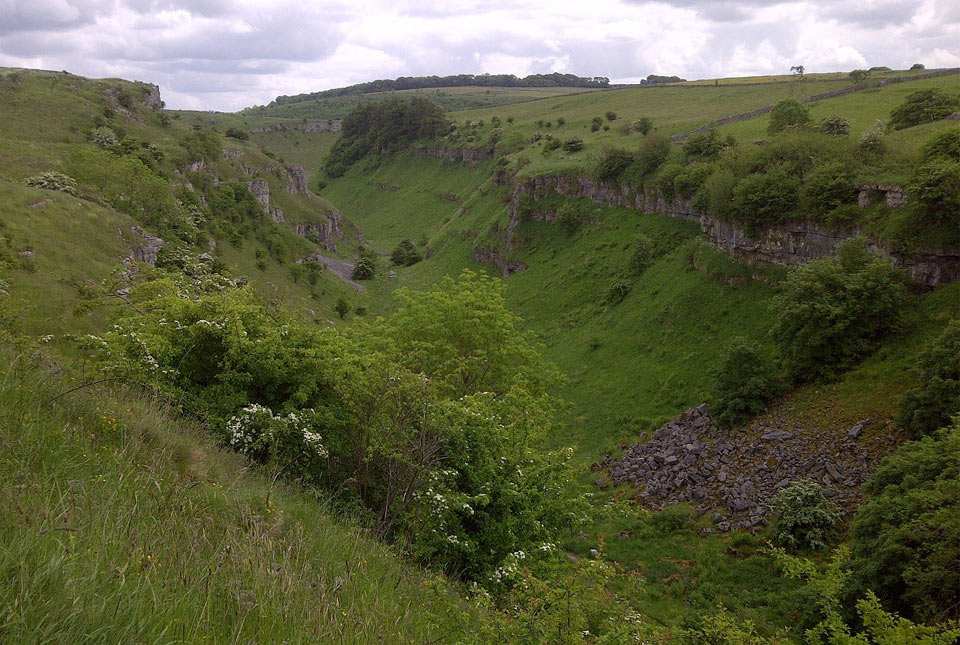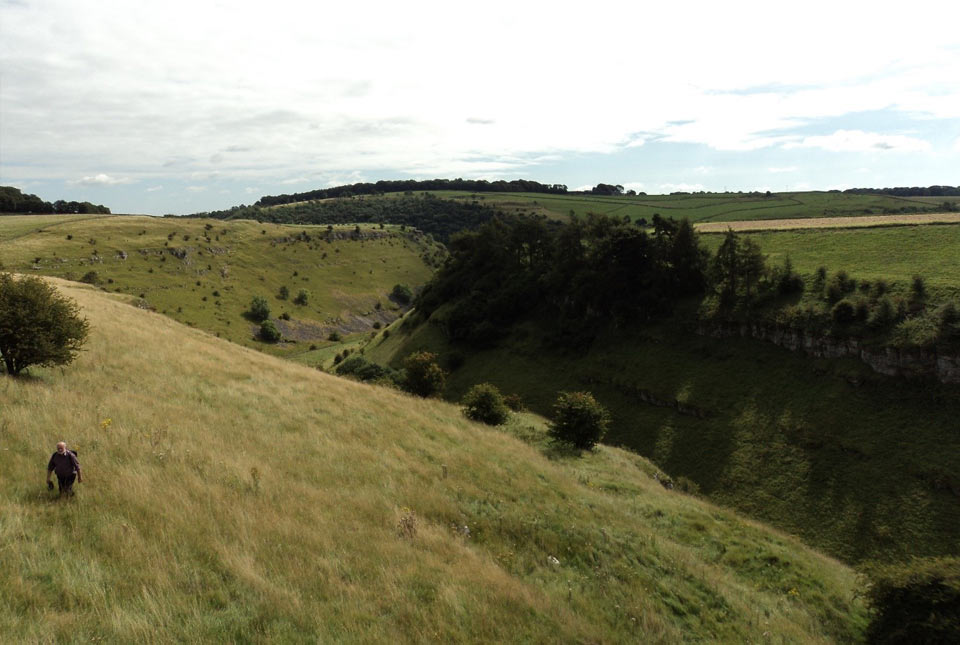The River Lathkill rises just below Monyash in Derbyshire and flows down to meet the River Wye just below Haddon Hall. The river flows over beautiful outcrops of the upper part of the Carboniferous Limestone Supergroup. The valley it forms is one of the best limestone dales in the Peak District and the upper part, to the west, is a National Nature Reserve, looked after by English Nature.
This part, containing Ricklow Quarry, is a site of Special Scientific Interest and contains some of the UK’s best specimens of Gigantoproductus fossils, a huge brachiopod (as its name suggests!)
Lathkill Dale
The valley is dry where it crosses the Monyash to Bakewell road, just below Monyash. It continues dry for about a kilometre until it reaches Lathkill House Cave, where the water, which has flowed underground from the Flagg area, resurges from the cave — or at least it does when the weather is wet. In times of drought there may be no water in the stream for another kilometre. From here the river becomes a famous trout-fishing river, described by the writer Izaak Walton, author of The Compleat Angler, to be the ‘purest and most transparent stream’ he had ever seen. Parts of the dale are colonised by Jacob’s Ladder, a rare plant that flowers in June and July.
Ricklow Quarry and Gigantoproductus
Ricklow Quarry contains rock faces where the sheer number of huge Gigantoproductus fossils is mind boggling.
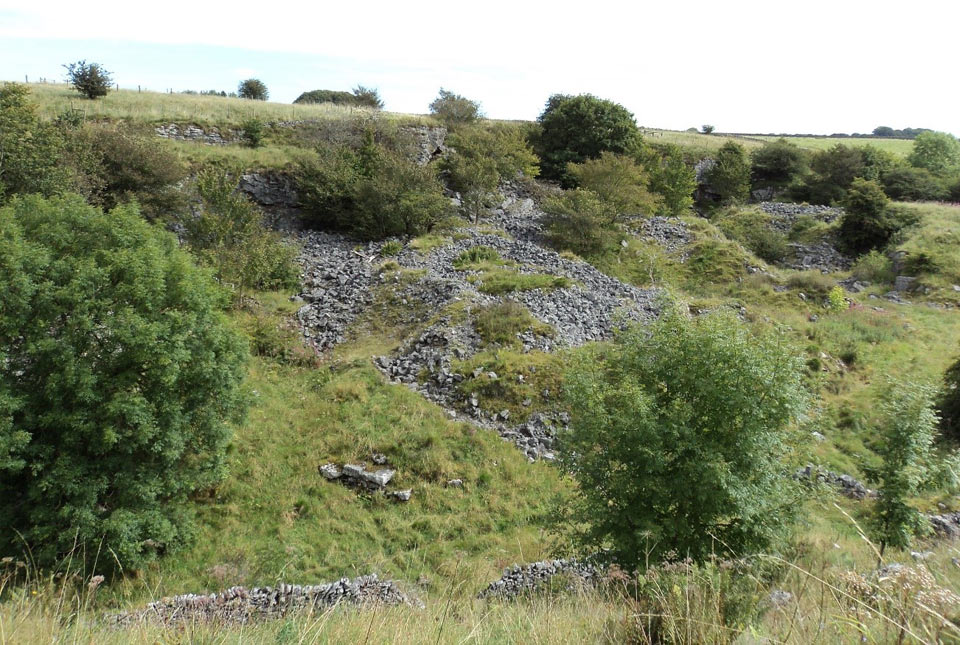
Ricklow Quarry, a site of Special Scientific Interest. BGS © UKRI.
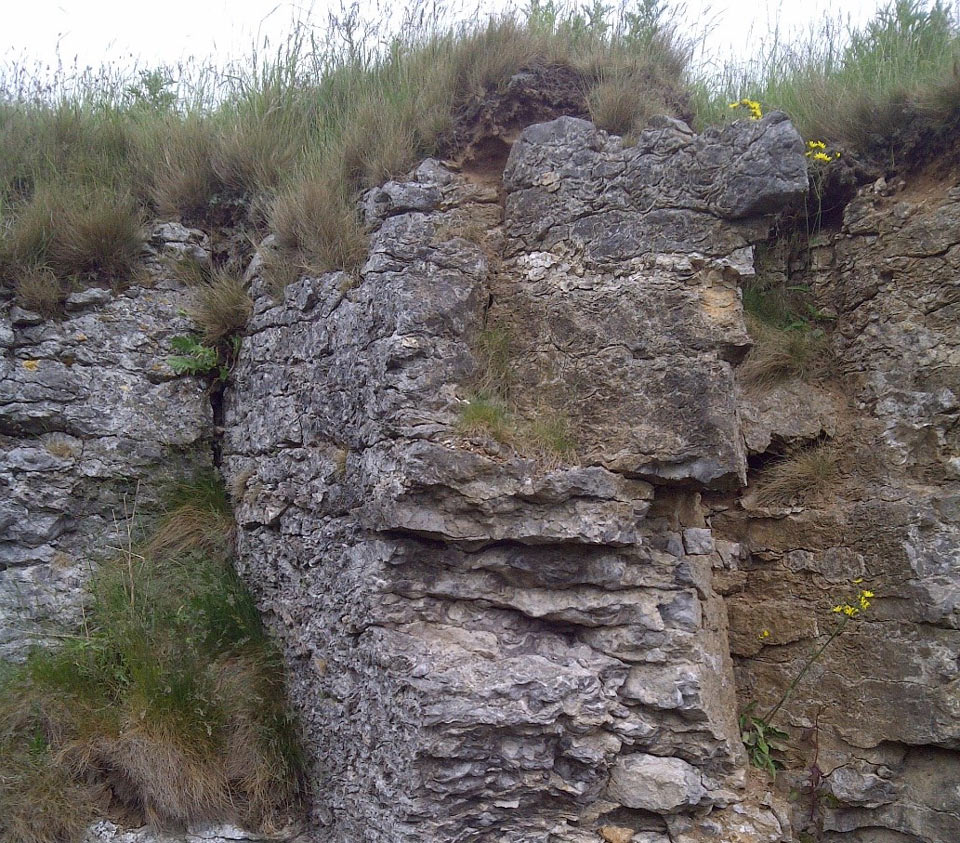
Gigantoproductus fossils in Ricklow Quarry. The height of the face is about 3 m. BGS © UKRI.
The genus Gigantoproductus contains the largest brachiopod specimens ever recorded and these most commonly occur in shell beds or lenses. Gigantoproductus is distinguished by its large size, shallow corpus cavity, irregular ribbing and fluting, and the occurrence of dorsal brachial cones.
The northern faces of Ricklow Quarry contain enormous numbers of Gigantoproductus fossils stacked on top of each other. The brachiopods lived in a shallow, warm sea on the eastern margin of a great landmass called Laurasia, close to the equator at the time. Gigantoproductus first appeared in the middle Viséan (early Carboniferous, about 347–329 million years ago) and reached peak diversity and abundance in the late Viséan.
Note: the northern faces of Ricklow Quarry are extremely unstable and under no circumstances should the faces be approached. No fossil collecting is allowed in the quarry as it is a Site of Special Scientific Interest.
Further information
Angiolini, L, Crippa, G, Azmy, K, Capitani, G, Confalonieri, G, della Porta, G, Griesshaber, E, Harper, D A T, Leng, M J, Nolan, L, Orlandi, M, Posenato, R, Schmahl, W W, Banks, V J, and Stephenson, M H. 2019. The giants of the Phylum Brachiopoda: a matter of diet? Palaeontology, Vol. 62(6), 1–29. DOI: https://doi.org/10.1111/pala.12433;
Nolan, L S P, Angiolini, L, Jadoul, F, Della Porta, G, Davies, S J, Banks, V J, Stephenson M H, and Leng, M J. 2017. Sedimentary context and palaeoecology of Gigantoproductus shell beds in the Mississippian Eyam Limestone Formation, Derbyshire carbonate platform, central England. Proceedings of the Yorkshire Geological Society, Vol. 61(4). DOI: https://doi.org/10.1144/pygs2017-393
About the author
Michael Stephenson is the former BGS Executive Chief Scientist for decarbonisation and resource management.
Relative topics
You may also be interested in

Discovering Geology
Discovering Geology introduces a range of geoscience topics to school-age students and learners of all ages.
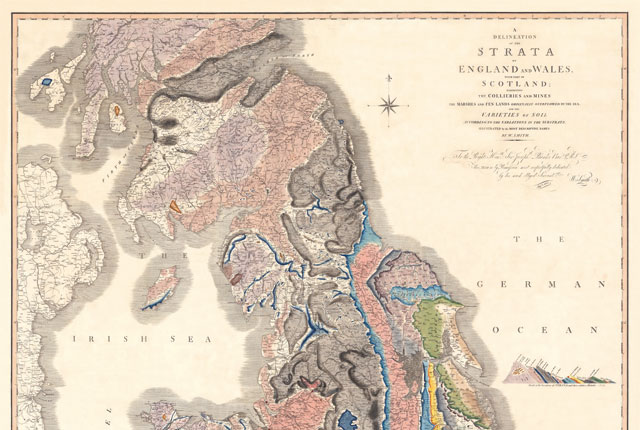
Maps and resources
Download and print free educational resources.
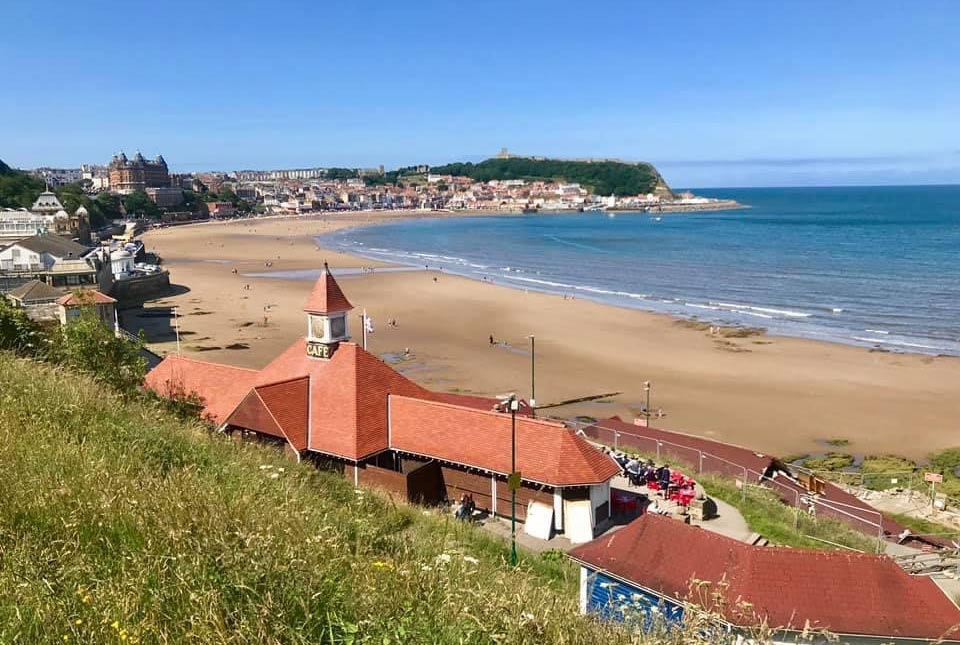
Postcard geology
Find out more about sites of geological interest around the UK, as described by BGS staff.


